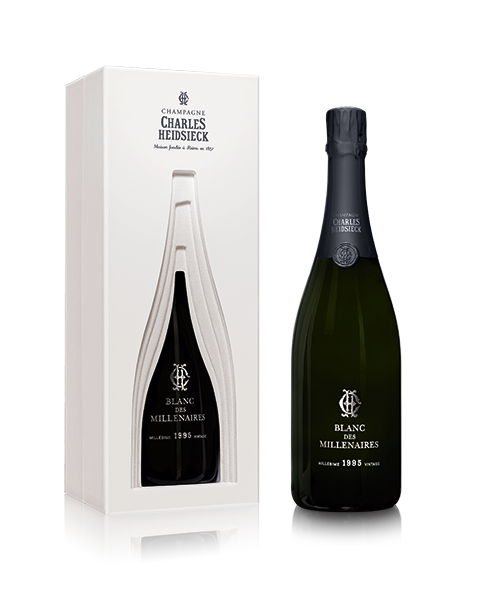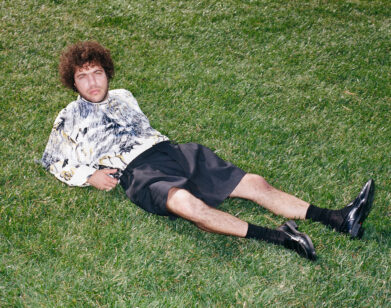White on White

ABOVE: CHARLES HEIDSIECK CHAMPAGNE’S NEW BLANC DES MILLÉNAIRES GIFT BOX.
Buried deep in the earth in the French city of Reims, there is a secret. In nearly four dozen hushed, ancient, pure-white enclaves, accessible only to a few, something delicious awaits release.
These 47 pure, silent, secret places are crayères, cellars built into the natural chalk quarries found during Roman occupation of Reims 2,000 years ago. In the 1850s, the crayères were bought by Charles Heidsieck—”Champagne Charlie,” to friends and admirers. Beyond their delicate taste and composition, Heidsieck Champagnes offer an irresistible story. Champagne Charlie, a sort of boozy, dandyish renegade who would be celebrating his 192nd birthday this Monday, June 16, was single-handedly responsible for introducing the drink to Americans—a wildly successful venture. (Heidsieck was also imprisoned for espionage during the American Civil War and ultimately cleared by Abraham Lincoln himself; he kept busy.)
A little over a year ago, the Charles Heidsieck label changed the shape of its flagship brut réserve and rosé réserve bottles to reflect the history of the crayères, starting with its 2007 harvest: “They are very tiny at the top, because that’s where they were taking the stones out of the earth,” explains the label’s CEO, Cécile Bonnefond. “And then they would dig as deep as they could and as wide as they could to take the blocks of chalk that they would use to build the big houses in the city.” The result is a bottle with a steeper, more even slope than is typically seen in Champagne bottles; an elegant curve that calls to mind Hogarth’s “line of beauty.”
By the time the new bottles were introduced, though, the “Blanc des Millénaires” vintage Charles Heidsieck will be releasing this year had already been undergoing its second fermentation for nearly two decades, since being harvested in 1995 and bottled in ’96. (Champagne grapes ferment twice, once in a stainless steel vat and again, for longer, in the bottle.) “We thought, well, if we can’t change the shape of the bottle, let’s put it in a packaging which [suggests] those very white, very silent, very deep, very secret chalk cellars,” Bonnefond says, “and let’s put it in white like the chalk.”
The result is beautiful, pure white packaging, newly available in stores this month. Its striated cutaways evoke the crayères, as does the vintage’s new name: blanc because it’s a blanc de blancs Champagne, composed of 100 percent Chardonnay grapes, undiluted by pinot; and Millénaires as a nod to the two-millennium history of the chalk cellars. (If “Millénaires,” spoken aloud, also suggests a certain luxury, well, it’s a happy false cognate.)
The chalk cellars are currently open only to friends of the brand—though that may someday change. At the end of this year, the crayères are candidates to be collectively declared a UNESCO World Heritage site, a designation Bonnefond dreams of honoring by eventually opening the cellars to visitation. “It’s not easy to dig in those chalk cellars without destroying them, so we need to be very careful,” Bonnefond says. “But we already have a plan, which is out for approval with the local authorities, to be able in the future to open those cellars to the public.”
For now, the Blanc des Millénaires packaging will have to do—for special occasions, or spontaneous ones. “A lot of Americans still drink it for Christmas and New Year’s Eve or very special events,” Bonnefond says. “[But] we start to see more regular consumption, where people will say, ‘We’re happy today, why don’t we have a great Champagne—which is more the way the French do it.'”






